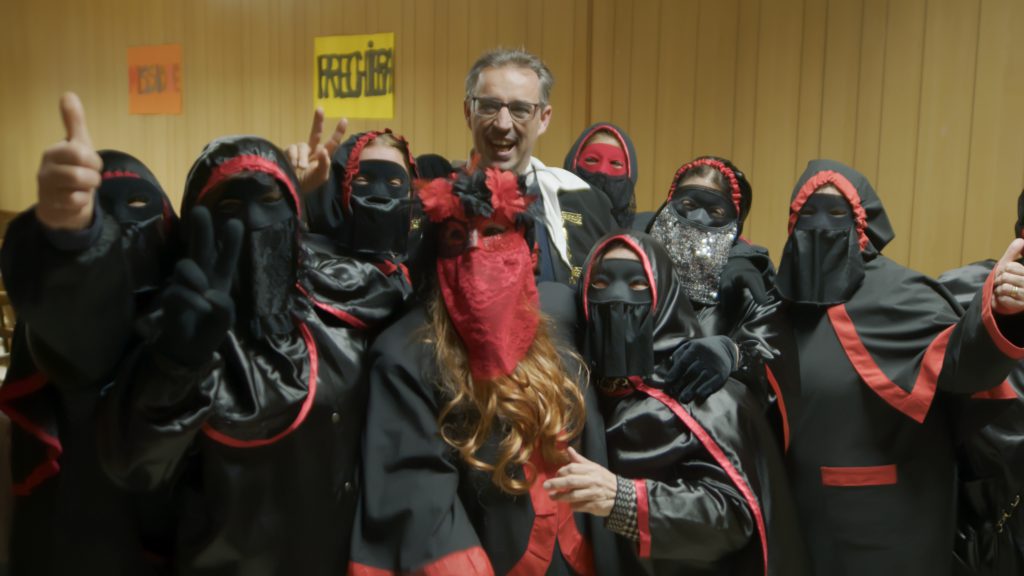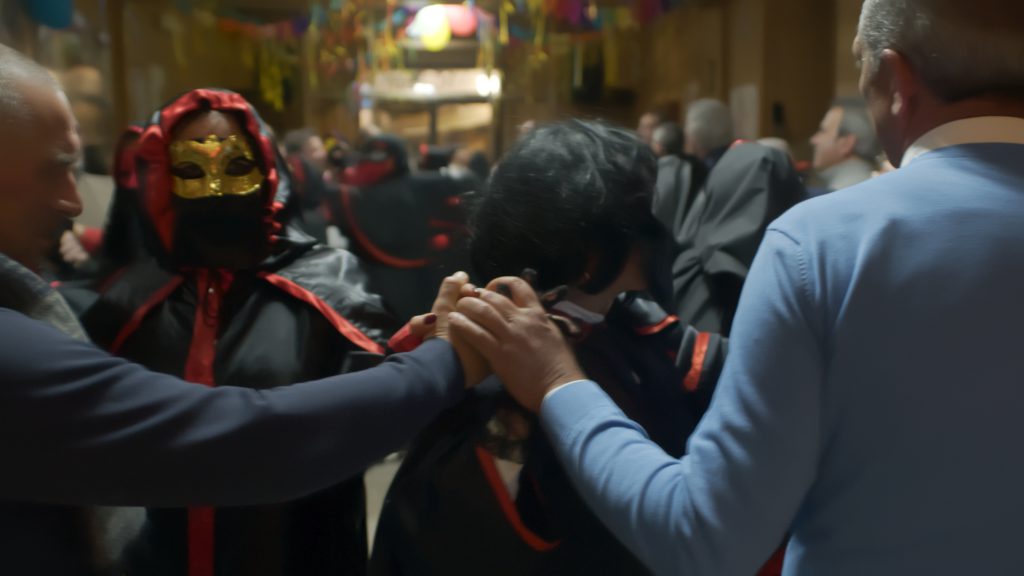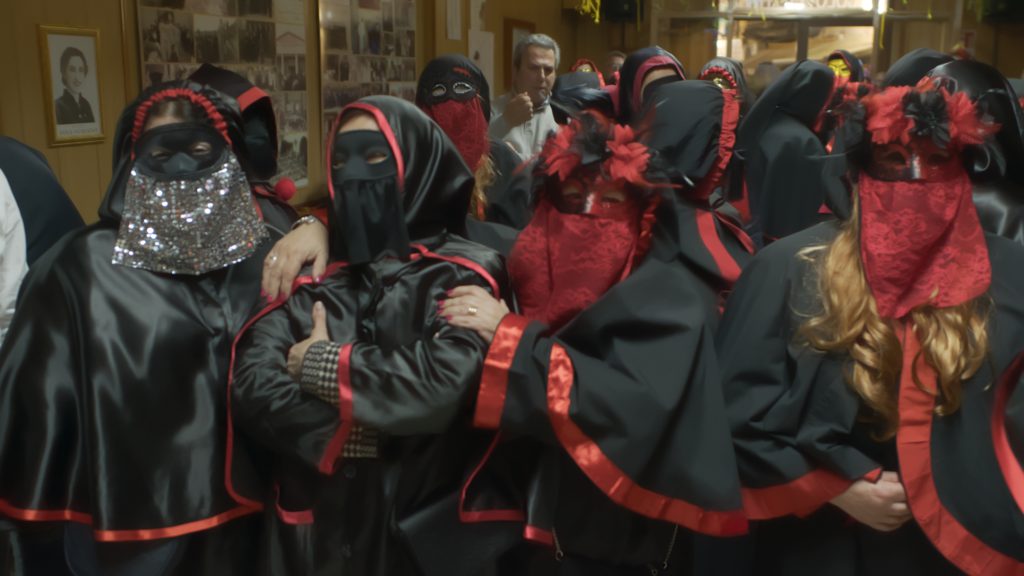Mask and Cultural Identity of Bisacquino: the Dominò
The Dominò mask is a distinctive cultural emblem of Bisacquino—a veritable local brand of identity – linked to the celebration of the Carnival in Bisacquino. Its origins are traced to the Arab presence in the region, dating back to the settlement period around the late 9th century CE. The Dominò is a full-body black garment with a hood and face veil, similar in form to a burqa, and was traditionally worn by women.
During Carnival, men were not permitted to invite a Dominò to dance; rather, it was the masked woman who could invite the man, thus reinforcing the ritual inversion of gendered roles. The group of Dominò was typically led by a bastorinere, an elegantly dressed man carrying a cane, who guided the masked procession.
Historically, wearing the Dominò was a privilege reserved for certain families or social groups. Today, however, the costume and mask are owned and used by many residents, and the act of masking—once a gendered practice of female concealment—has become a shared communal expression. A key element of this tradition remains the rule that no participant may unveil their face before midnight on Sunday, preserving the ritual mystery and social function of the mask.
Through both its aesthetic qualities and its symbolic meanings, the Dominò mask continues to embody a powerful marker of collective identity and intangible heritage, “branding” the Bisacquino community in the wider cultural landscape.
This element has been included in the Register of Intangible Heritage of local interest of the Municipality of Bisacquino, as part of Intervention “Activation of the Observatory on the Intangible Cultural Heritage of the Territory through the application of the REIL methodology – Register of Intangible Heritage of Local Interest”, within the “BISACQUINO, BORGO DEL CINEMA E DELLE ARTI” project, funded by the NRRP (National Recovery and Resilience Plan), Mission: Digitalisation, innovation, competitiveness, culture and tourism, Component: Tourism and culture 4.0, Investment 2.1 “Attractiveness of villages” CUP D99I22000160006.




